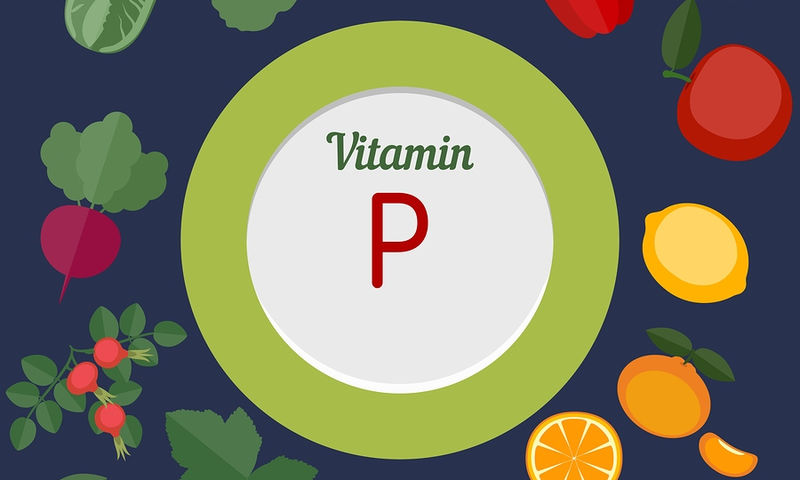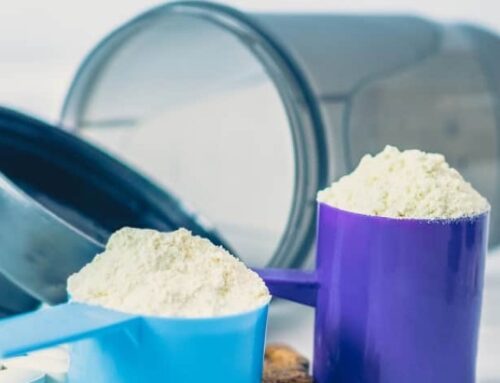Vitamin P, considered as the vitamin providing the plants with their intense coloring and offering the organism and health numerous benefits, according to experts, had its first reference in 1930, however, still remains unknown up to date.
What’s the reason?
Which is the Vitamin P and how may be included in our diet?
Is there any beneficial action offered?
Which foods provide this valuable vitamin?
Are any risks of side effects or health complications?
This article tries to answer all your queries on this vitamin.
Vitamin P – Identity

This vitamin named as Vitamin P in 1930 today is broadly known as “flavonoids”.
In recent years, scientists have discovered more than 5,000 flavonoids existing in our system, classified as substances rich in phytonutrients and powerful antioxidants.
Scientists have also discovered that these valuable ingredients are responsible for the coloring of various plants, fruits or vegetables, a completely natural process aiming at making the plant more “attractive” to insects for the pollination process.
The intense color given to plants, by vitamin P or otherwise the flavonoids, however, has another very important utility for the “safety” of the plant and its healthy growth, discouraging “enemies” from destroying it. Bacteria and parasites, or even various animals discouraged by the bright color of the plant, so avoiding destroying it.
An additional feature is the plant protection from the destructive ultraviolet rays of the sun.
In fact, Vitamin P is not a vitamin.
Nevertheless, due to many benefits provided to health, the name Vitamin P given to it was later changed to “flavonoid elements” (as currently called worldwide).
The strong antioxidant protection provided to the organism is not the basic beneficial property of flavonoids, as thought by many people, but a general boost to organism and improvement of health in various areas, supplement its list of offers.
This list includes strengthening of teeth and bones to remain strong and healthy, enhancement and stimulation of the muscular system, improvements of the skin quality and assuring its health while enhancing the production of valuable collagen.
They also fight inflammation, by avoiding infections. They prevent serious diseases such as cancer, heart disease, hypertension, obesity, type 2 diabetes and a variety of other chronic diseases, as well.
It is extremely important to note that Vitamin P (i.e. flavonoids) can also prevent a stroke and even save a person’s life (especially in cases of predisposition or heredity).
Research has shown a reduction of the risk by up to 31% (not at all negligible).
Finally, their positive effect on the function of blood vessels is a significant feature. Regular consumption of flavonoids via diet may prevent the formation of atherosclerotic plaque on the walls of blood vessels.
In fact, scientists claim that in addition, the consumption of flavonoids, enhances the health of blood vessels and significantly improves their elasticity.
There is also evidence that consuming flavonoids helps increase nitric oxide levels, which in turn dilate arteries, facilitating blood flow to all organs and tissues in the organism.
Vitamin P is also extremely important since it helps to reduce the levels of bad cholesterol effectively in the blood and control blood pressure (a high percentage suffers due to poor quality diet followed).
Flavonoids, however, are not the only species. These compounds exist in nature in different types, providing different benefits to organism.
Vitamin P / Flavonoids – Basic types

As already mentioned, scientists have till today discovered more than 5,000 species of flavonoids, with studies still continuing to discover even more nutritious natural foods containing them in sufficient quantities.
Oranges, per example, are perhaps one of the most valuable sources of flavonoids. This is one of the reasons why the consumption of fresh oranges (in fruit or juice form) is recommended by doctors and nutritionists on a daily basis.
Listed below the most basic categories of flavonoids (worth knowing):
Flavones
Found: in herbs (as parsley, mint, oregano & thyme), chamomile and celery
- Flavonols & Flavon-3-ols (Flavonols & Flavon-3-all)
Found: mainly in tea (black and green), cocoa, red wine (both grapes and raisins) and apples
Flavonones
Found: in all citrus fruits (oranges, lemons, tangerines, grapefruits, oranges)
Anthokyanidines
Found: in all fruits, vegetables red, blue or purple (grapes, berries, strawberries, beets, red peppers, red cabbage)
Isoflavones
Found: in soy and all its by-products
Vitamin P – Basic Benefits
Vitamin P (commonly flavonoids) shown to provide significant health benefits, urges new studies for emerging new benefits.
Some of key benefits offered (making them very important for our diet) are:
Obesity
Reduce the chance of developing obesity, while they promote better weight control.
Type 2 diabetes
According to research studies, high flavonoid intake can reduce the risk of developing type 2 diabetes by as much as 5%. In this case, however, we are talking about systematic consumption of flavonoids (i.e. in the daily diet of the individual).
Cardiovascular diseases
Another study claims that regular intake of Vitamin P through diet can stimulate heart function and prevent heart attacks and development of cardiovascular disease.
Brain / Cognitive function
Just recall your mother suggesting to have a chocolate before school exams was a valuable suggestion. Consumption of flavonoids (found in abundance in cocoa and so in chocolate as well) promotes good brain function, enhances memory, increases perceptual capacity and ultimately protects against brain cell damage and impaired brain function.
Immune system
Consumption of foods rich in flavonoids is extremely beneficial for strengthening the immune system. Proper nutrition can greatly determine a person’s immunity to the “threats” of its environment.
Premature Aging
Clearly – as known – the consumption of flavonoids is very important for beauty as well, preventing the formation of free radicals, inflammation and oxidation. In this way, retains freshness and youth much longer, so delaying the signs of aging.
Cancer
According to studies, Vitamin P can also prevent the growth of cancer cells in organism, by promoting the health of cells and preventing their degeneration due to various diseases.
Flavonoids – Importance of Antioxidant Action
The problem of daily stress, usually leads to the development of free radicals in our organism (ultimately associated with a number of chronic and very serious diseases).
During metabolizing food, free radicals are created in organism (converted to valuable energy) by producing oxygen.
However, free radicals are produced in the organism due to many more bad habits of our daily lives, as smoking, environmental pollution, poor nutrition, pesticides, chemicals that we constantly introduce into our body, various diseases … all of them favoring the growth of free radicals in the organism and increasing the risk of creating various inflammations / dysfunctions / so charging our health.
Flavonoids act as powerful antioxidants, fighting all above mentioned inflammations and dysfunctions, occurring due to factors beyond our control in our daily lives (such as environmental pollution, water pollution, the use of pesticides in almost all foods, the use of strong and dangerous chemicals for greater food preservation, etc.).
The antioxidant activity of Vitamin P in a person’s diet provides a shield to organism from serious diseases such as cancer, diabetes, obesity, cardiovascular disease, brain damage, impaired cognitive ability and hypertension.
Some even claim that regular consumption of flavonoids (as part of a balanced diet) may reduce the risk of developing autoimmune diseases and other chronic diseases of the organism.
Foods I should learn to include in my diet

- all cruciferous vegetables (broccoli, cauliflower, cabbage, brussels’ sprouts, radishes, watercress, turnips and arugula)
- all citrus fruits (oranges, lemons, tangerines, grapefruits, citrus, oranges, limes, kumquats, sweet lemons)
- cocoa (and chocolate)
- tea (green & black)
- coffee
- red wine
- all berries (blueberries, raspberries, blackberries, acai berries, strawberries, goji berries, cranberries, sea-berries / sea buckthorn, gooseberries etc)
- apples
- all red / purple / blue fruits and vegetables
- grapes
- thyme
- oregano
- onions
- all legumes (lentils, beans, chickpeas)
- soy
- cereals
- cherries
- parsley
- various greens






